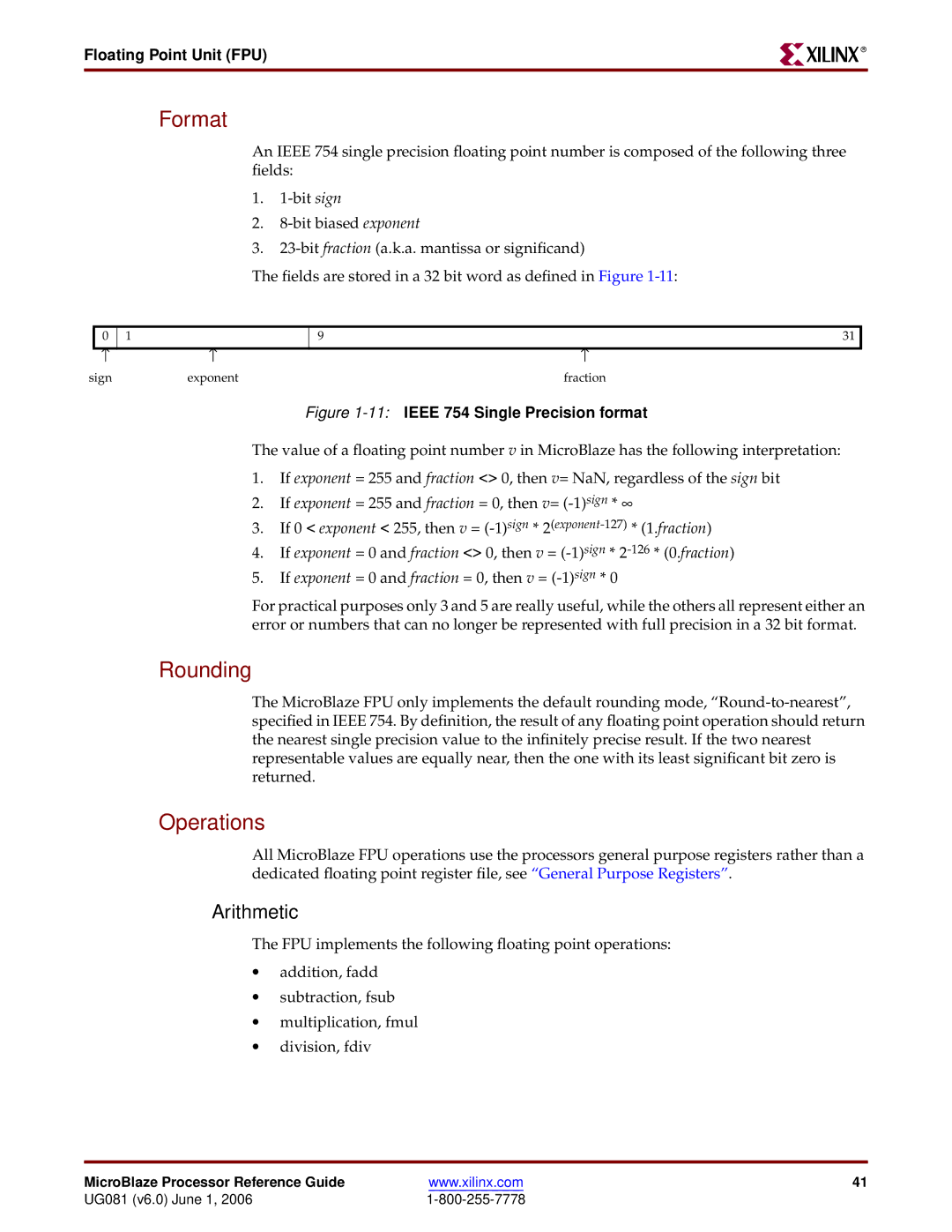
Floating Point Unit (FPU)
R
Format
An IEEE 754 single precision floating point number is composed of the following three fields:
1.
2.
3.
The fields are stored in a 32 bit word as defined in Figure
0
↑
1
↑
9 | 31 |
↑
sign | exponent | fraction |
Figure 1-11: IEEE 754 Single Precision format
The value of a floating point number v in MicroBlaze has the following interpretation:
1.If exponent = 255 and fraction <> 0, then v= NaN, regardless of the sign bit
2.If exponent = 255 and fraction = 0, then v=
3.If 0 < exponent < 255, then v =
4.If exponent = 0 and fraction <> 0, then v =
5.If exponent = 0 and fraction = 0, then v =
For practical purposes only 3 and 5 are really useful, while the others all represent either an error or numbers that can no longer be represented with full precision in a 32 bit format.
Rounding
The MicroBlaze FPU only implements the default rounding mode,
Operations
All MicroBlaze FPU operations use the processors general purpose registers rather than a dedicated floating point register file, see “General Purpose Registers”.
Arithmetic
The FPU implements the following floating point operations:
•addition, fadd
•subtraction, fsub
•multiplication, fmul
•division, fdiv
MicroBlaze Processor Reference Guide | www.xilinx.com | 41 |
UG081 (v6.0) June 1, 2006 |
|
